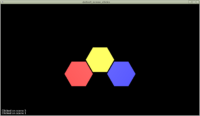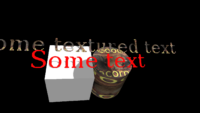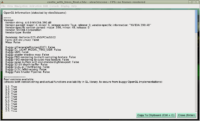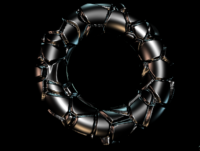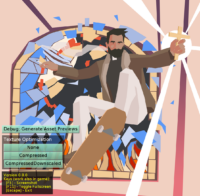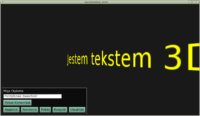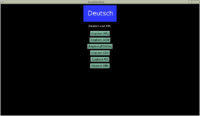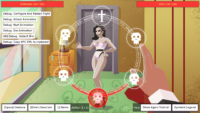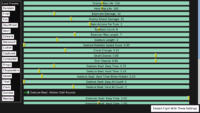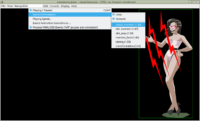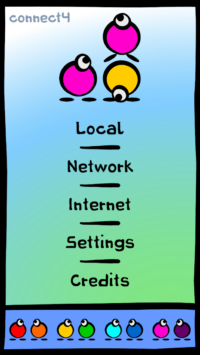 |
Busy month! Partially due to developing the last chapter of our game The Unholy Society, in which a certain-special-someone is scheduled to appear 🙂
New stuff in the engine:
- Important bugfix: Changing the FullScreen property of the window is now more reliable. The actual change (which may involve recreating OpenGL context) happens with delay, not immediately at the point you assign the “FullScreen” property. This makes it safe to use always, even during
Window.OnOpen/Application.OnInitialize. Thanks for Ninjamida from Discord for finding this nasty bug. -
SceneManager.OnProjection event along with a demo switch_projection.lpr showing how to use it to toggle between orthographic/perspective projection.
-
TAbstractBindableNode.Bound property.
-
More reliable on-screen keyboard on Android thanks to Benedikt Magnus!
New website improvements:
-
You can now comfortably switch between viewing API documentation for engine stable version (6.4) and unstable (6.5). The currently viewed version is clearly visible, and when switching we try to show the same identifier (if it exists in the other version).
-
The “search” in our documentation is better now (highlights found terms, no messed up HTML) as I improved the “tipue search” functionality in PasDoc.
-
I have adjusted our analytics (Piwik) settings to be compliant with GDPR and anonymize the IP addresses and delete old data. Our privacy policy was reflected about this.
P.S. Have you seen a new pretty webpage of our studio Cat-astrophe Games ? 🙂 My cats are there!
Retired: GitHub -> SourceForge SVN synchronization
Our GitHub -> SourceForge SVN synchronization (using forked sync2git) started to have problems.
(Details: The synchronization repository got into a state unexpected for git-svn. Possibly the underlying reason was a random SourceForge connectivity issue, but that’s speculation.)
Since I don’t think anyone is using SourceForge SVN anymore, I just turned it off, and I made sure no links to SourceForge SVN repository exist anymore on our website. Please use only CGE repositories on GitHub from now on, in particular the main Castle Game Engine repository.
Note that you can still use either GIT or SVN client to get Castle Game Engine. GitHub supports doing “svn checkout” on a GitHub repository (or a subdirectory of it).
